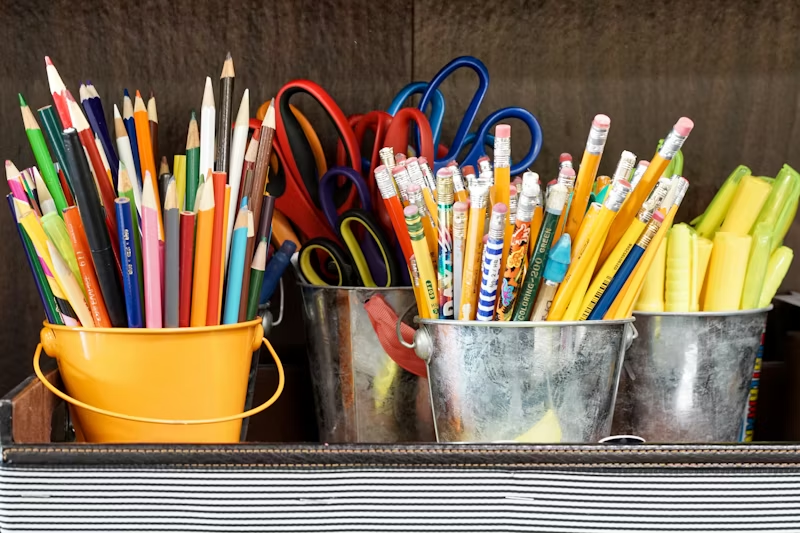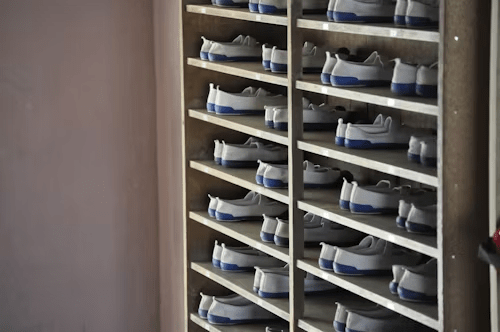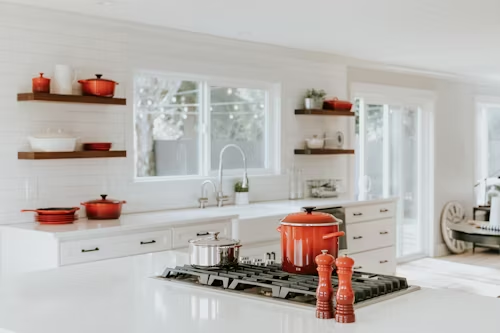Organizing baby clothes can be a daunting task for new parents, especially when you have a lot of baby clothes and limited space. However, with a little planning and creativity, it can be an enjoyable and rewarding experience.
One of the first steps to organizing baby clothes is to sort them by size and season. This will help you to easily find the clothes you need and ensure that your baby is wearing clothes that fit properly. You can use storage bins or dividers to separate clothes by size and season, or hang them up in the closet.
Another important aspect of organizing baby clothes is to purge regularly. Babies grow quickly, and it’s easy to accumulate a lot of clothes that they have outgrown. To keep your baby’s closet organized and clutter-free, it’s a good idea to donate or store clothes that no longer fit. This will also make room for new clothes as your baby grows.
Assessing Your Baby’s Clothing Needs
When it comes to organizing baby clothes, the first step is to assess the clothing needs of your baby. This involves sorting the clothes by size and type and considering the function of each item.
Sorting by Size and Type
Babies grow quickly, and their clothing needs change just as fast. It is essential to sort their clothes by size and type to ensure that you have the appropriate clothing for each stage of their growth. This can be done by creating separate piles for each size and type of clothing, such as onesies, sleepers, and outfits. You can then store each pile in labeled containers or drawers to make it easy to find what you need when you need it.
Considering the Function of Each Item
When assessing your baby’s clothing needs, it’s important to consider the function of each item. Some clothes are designed for specific purposes, such as sleepers for bedtime or onesies for daytime wear. Others are more versatile and can be worn for a variety of occasions. By categorizing your baby’s clothes based on their function, you can ensure that you have the appropriate clothing for each situation.
For example, you may want to have a separate pile of clothes for outings, such as dresses or dress shirts, and another pile for playtime, such as comfortable onesies or t-shirts. This will make it easier to dress your baby appropriately for each occasion and ensure that you always have the right clothes on hand.
Overall, by assessing your baby’s clothing needs and organizing their clothes accordingly, you can ensure that you have the appropriate clothing for each stage of their growth and each situation.
Choosing the Right Storage Solutions
When it comes to organizing baby clothes, choosing the right storage solutions can make all the difference. Here are some effective ways to store baby clothes:
Utilizing Dressers and Drawers
Dressers and drawers are great for storing baby clothes, especially if you have limited closet space. Using drawer dividers can help separate different categories of items in each drawer, making it easier to find what you need. It is also a good idea to label the drawers to make it easier to find specific items quickly.
Maximizing Closet Space
Closets are another great storage option for baby clothes. Hanging clothes on hangers or closet dividers can help keep them organized and easy to find. Utilizing hanging space, such as over-the-door shoe organizers or hooks, can also maximize storage space. Rolling carts, wire baskets, and cube shelves can be used to store items that do not need to be hung up.
Innovative Storage Ideas
There are many innovative storage ideas that can be used to organize baby clothes. Door shelves, wall storage, and floor storage can be used to store items that do not fit in drawers or on hangers. Bookshelves can be used to store larger items, such as blankets or stuffed animals. It is important to choose storage solutions that work for your specific needs and space.
Overall, choosing the right storage solutions can help keep baby clothes organized and easy to find. Whether you are utilizing dressers and drawers, maximizing closet space, or using innovative storage ideas, there are many options available to help keep baby clothes tidy and accessible.
Implementing Organizing Accessories
Organizing accessories can be a great way to make the most of your baby’s closet space. By using dividers and labels, adding extra hanging options, and incorporating clear storage, you can keep your baby’s clothes and accessories organized and easily accessible.
Using Dividers and Labels
Dividers and labels are a great way to keep your baby’s clothes organized by size, type, or season. Baby closet dividers can be used to separate clothes by size, so you can easily find the right outfit for your growing baby. You can also use labels to identify different types of clothing, such as onesies, sleepers, or pants.
Adding Extra Hanging Options
Adding extra hanging space to your baby’s closet can help you make the most of the available space. A hanging shoe organizer can be used to store socks, shoes, and accessories, while a trolley can be used to store diapers, wipes, and other baby essentials. You can also install wall-mounted baskets or hooks to hang hats, jackets, or other items.
Incorporating Clear Storage
Clear storage containers can be a great way to store your baby’s clothes and accessories while keeping them easily visible and accessible. You can use plastic bins to store out-of-season clothes or items that are too big for your baby, and label everything so you can quickly find what you need. Clear storage bags can also be used to store blankets, bedding, or other bulky items.
Overall, using organizing accessories can help you keep your baby’s clothes and accessories tidy and organized. By using dividers and labels, adding extra hanging options, and incorporating clear storage, you can make the most of your baby’s closet space and keep everything easily accessible.
Maintaining Organization
Once the baby clothes are organized, it’s important to maintain that organization to avoid the chaos of a disorganized closet. Here are a few tips to help keep the baby clothes organized:
Daily Routines to Keep Clothes Organized
- Put Clothes Away Immediately: Don’t let the clothes pile up on the changing table or in the laundry basket. Put them away immediately after washing or after changing the baby.
- Use Drawer Dividers: To keep clothes organized within drawers, use drawer dividers to separate different categories of items in each drawer. This will make it easier to find what you need and keep everything in its place.
- Create a Laundry Routine: Establish a laundry routine that works for you. This could mean doing laundry every day or every other day, depending on your baby’s needs.
Dealing with Growth and Hand-Me-Downs
- Sort Clothes Regularly: Every few months, sort through the baby clothes to see what still fits and what doesn’t. This will help you keep track of what your baby needs and what can be donated or passed down to a younger sibling or friend.
- Label Clothes by Size: To make it easier to sort through clothes, label them by size. This will help you quickly identify what clothes your baby can wear and what needs to be put away for later.
- Wash Clothes Before Storing: Before storing clothes for future use, make sure to wash them first. This will help keep them fresh and clean for the next use.
- Consider Baby Safety: When sorting through clothes, make sure to check for any safety hazards, such as loose buttons or strings. Remove these items before storing or donating the clothes.
By following these tips, parents can maintain an organized baby clothes system that makes it easier to find what they need and keep their baby looking stylish and put together.
Creative Tips and Tricks
When it comes to organizing baby clothes, there are many creative tips and tricks that parents can use to make the most of their space while keeping everything organized and easily accessible. Here are some ideas to get started:
Decorative and Functional Uses of Accessories
Accessories can serve both a decorative and functional purpose when it comes to organizing baby clothes. For example, hair bows can be used to label bins or baskets of clothes, making it easy to find specific items without having to dig through everything. Chalkboard paint can be used to create labels on drawers or closet doors, allowing parents to change the labels as their baby grows and their clothing needs change.
Clear storage containers are another great accessory for organizing baby clothes. They allow parents to see what’s inside each container without having to open it up, making it easy to find specific items quickly. Ornament boxes can be repurposed to store socks, bibs, and other small items, while laundry bags can be hung on the back of a door to hold dirty clothes until laundry day.
Space-Saving Techniques
When it comes to organizing baby clothes, space-saving techniques are essential. One way to save space is to use door storage organizers to hold shoes, hats, and other accessories. Another option is to use toy bins or baskets to hold clothes that are too small or out of season, freeing up space in the dresser or closet.
Closet rods can also be used to maximize space. By adding an additional rod, parents can double the amount of hanging space in their baby’s closet. File folding is another space-saving technique that can be used to make the most of dresser drawers. By folding clothes in a specific way, parents can fit more items in each drawer while keeping everything visible and easily accessible.
Overall, organizing baby clothes doesn’t have to be a daunting task. With the right accessories and space-saving techniques, parents can create a functional and organized space for their little one’s clothes.



